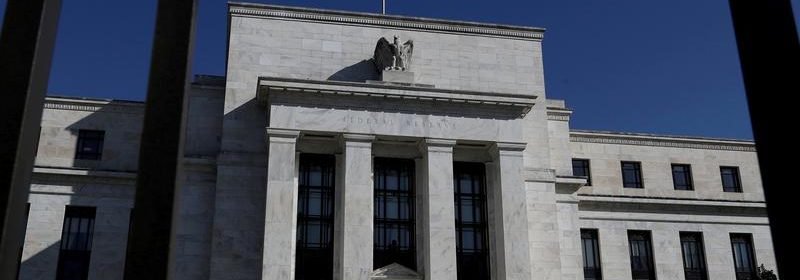Fed officials open debate on bond taper

WASHINGTON (Reuters) -The debate over when and how the Federal Reserve could begin to reduce some of its massive stimulus for the economy was on full display on Monday, as two U.S. central bank officials explained their support for an earlier withdrawal and a third said any change was still quite a ways away.
The conversation over the future of the Fed’s $120 billion in monthly bond purchases is just beginning, and is expected to be a central topic when Fed Chair Jerome Powell appears on Tuesday before the U.S. House of Representatives Select Subcommittee on the Coronavirus Crisis.
In prepared testimony released late on Monday, Powell said the U.S. economy continues to show “sustained improvement” and forecast further job market gains and a decline in inflation from current elevated levels, but he did not say anything about the taper debate.
But earlier in the day, St. Louis Fed President James Bullard and Dallas Fed President Robert Kaplan laid out some of the major questions Fed officials will have to grapple with as they work through an early test of the central bank’s new strategic framework at a time when inflation is coming in strong and the labor market recovery is weaker than expected.
“Creating optionality for the committee will be really useful and that will be part of the taper debate as we think about how much signaling we are doing about future rate policy,” Bullard said during a virtual event organized by the Official Monetary and Financial Institutions Forum and the Philadelphia Fed.
Policymakers will need to bring inflation gently down to the Fed’s 2% goal, he said, and now, with the pandemic on the decline, is clearly the time to open the debate over the Fed’s bond-buying program.
Speaking on the same panel, Kaplan noted his concerns with a frothy housing market and the potential for easy policy to feed “excesses and imbalances.”
“I’ve been more of a fan of doing some things maybe to take our foot gently off the accelerator sooner rather than later so that we can manage these risks” and make it more likely that the Fed will be able to “avoid having to press the brakes down the road,” Kaplan said.
Still, New York Fed President John Williams, speaking a few hours later, signaled it is too early for any turn in policy, yet.
“It’s clear that the economy is improving at a rapid rate, and the medium-term outlook is very good,” Williams said in remarks prepared for a virtual event with the Midsize Bank Coalition of America. “But the data and conditions have not progressed enough for the FOMC to shift its monetary policy stance of strong support for the economic recovery.”
The most important thing, he told reporters later, is watching the data and seeing how it plays out.
‘HEALTHY DEBATE’
Under the new approach, officials are willing to overshoot the Fed’s 2% inflation target for “some time” in order to achieve average 2% inflation and maximum employment.
Central bank policymakers will need to decide how much inflation they are comfortable with and for how long they would tolerate an overshoot of the Fed’s target before adjusting monetary policy, Bullard said.
“What’s the time frame for that and what’s the magnitude of that?” he said. “I think that’s a healthy debate to have.”
Fresh economic projections released after the Fed’s policy meeting last week showed 11 of 18 policymakers are pencilling in at least two quarter-percentage-point rate increases by the end of 2023, a shift from March when a clear majority of policymakers favored no change to borrowing costs until 2024.
The tilt to a faster expected start to hiking rates caught markets by surprise. Kaplan said it was a reaction to a U.S. economic outlook that took a sharp turn between December and June.
As of December the path of the coronavirus pandemic remained uncertain, Kaplan said. “When we got to March it was clearer that we were going to get the pandemic under control,” he said. And by June, the outlook received a “big upgrade” that made the core of officials expect rate increases in 2023 instead of 2024. “What you are seeing … is monetary policymakers simply reacting to the dramatically improved economic outlook.”
The discussion over how to adjust the Fed’s asset purchases will include deciding whether to reduce purchases of mortgage-backed securities at a different pace than Treasury securities, when to start and how quickly to move, Bullard said.
“I don’t think that this is an environment where you can just go on automatic pilot,” he said. “There’s a lot of volatility in the macroeconomic data, so we are probably going to have to be a little bit more ready than we were in 2014 to possibly make adjustments to our taper strategy.”
Source: Read Full Article
